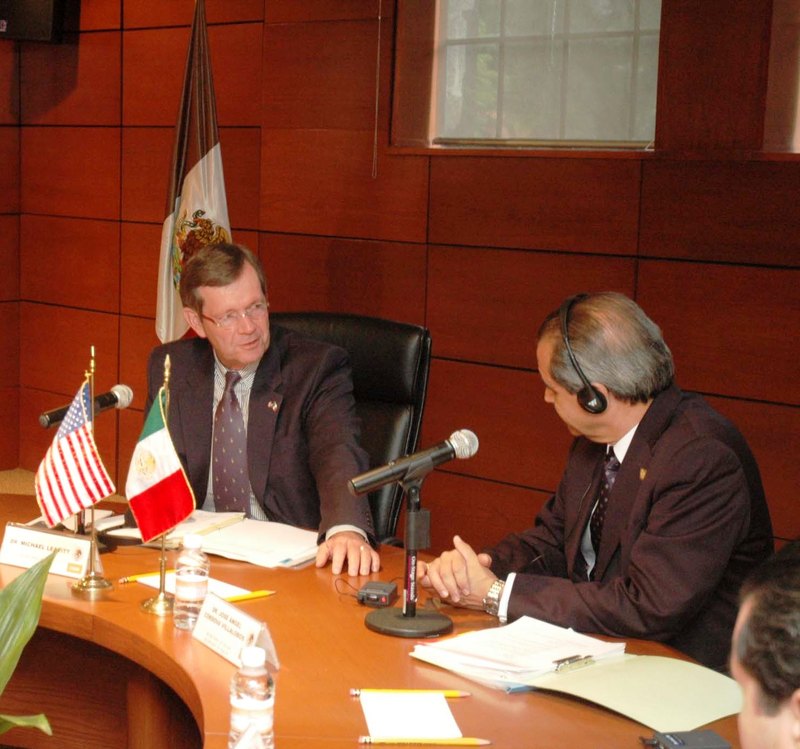Mexico City Meetings
Written June 23, 2008
I’m writing from Mexico City tonight. I participated in a bi-lateral meeting with José Cordova, Secretary of Health, and members of his staff. We then had a working dinner that added Alberto Cardenas, Secretary of Agriculture, and Eduardo Sojo, the Secretary of Economy, and representatives of other Mexican national government agencies.
Secretary Cordova and I have a long list of things we are working on together. Most of them related to joint projects we are doing along the border.

Secretary Mike Leavitt and Secretary of Health for the United Mexican States Jose Angel Cordova.
Secretary Cardenas and I have known each other since 2003. Previously, he was Secretary of Environment and I headed the U.S. Environmental Protection Agency (EPA). It was the first time I met Secretary Sojo. Speaking of environmental issues, the air here is much better than I remember it. I joked with Secretary Cardenas that it was the result of the joint projects we had done on clean fuel while I was at EPA. I suspect the air isn’t always as good, but it is good to see some progress.
The evening meeting was devoted to a discussion of product safety. I won’t discuss the content of the meeting except to say it was focused on ways we can work together to assure safety of food and drug products that are produced in Mexico. I am going to Central America tomorrow for discussions with five governments on the same subject.
An obvious topic of conversation was the current situation with tomatoes. Tomatoes are Mexico’s biggest agricultural export to the U.S. Fresh fruit and vegetable exports to America accounted for $4.4 billion last year. As always, an incident in that sector of their economy has serious ramifications, and we are working with them to minimize impact, while putting safety first.

Secretary Leavitt speaking to Secretary Cordova during a bi-lateral meeting between U.S. and Mexican health officials.
FDA is working non-stop to find the source of the salmonella outbreak that many states are experiencing right now. FDA has completed the trace-back for some of the tomatoes associated with the outbreak. The investigation has led them to certain farms in Mexico and Florida.
We have deployed a team to Mexico. They will conduct joint inspections with regulators in Mexico and Florida at the farms and other distribution points. Meanwhile, the FDA will continue to collect samples of tomatoes and conduct trace-back activities.
FDA is keeping a list of the areas that have not been associated with the outbreak. We added a long list of states within the United States and Mexico. It is on the FDA website.
Tomorrow, I’ll meet with U.S. businesses in Mexico City, tour a food processing plant, and give a diplomacy speech. One thing making this trip a little extra special is that my 18 year old son is accompanying me (at my expense). He is about ready to leave home for college and this is a way for us to have a little adventure together.
